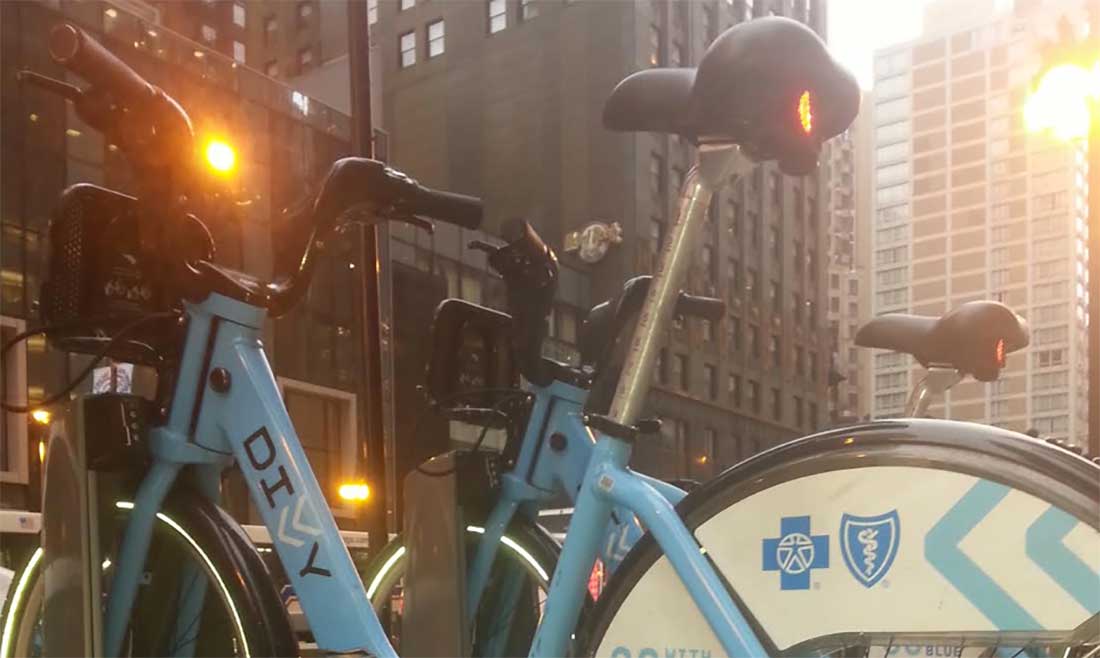By Kathleen McAuliffe
Chicago bike commuters are braving icy roads and freezing temperatures as part of the Winter Bike Challenge, a two-week cycling initiative meant to increase winter bike commuting.
During the third annual event, which is free through online registration, riders log their mileage from trips taken through Jan. 27. The Challenge, which will award daily prizes for riders, is organized by the Active Transportation Alliance (ATA), a Chicago-based organization working to improve conditions for walkers and cyclists.
Participation in the Winter Bike Challenge has soared in the last two years, said Clare McDermott, ATA’s marketing and events director. More than 375 riders are registered for this year’s event, a 60 percent rise since its inception in 2015, she added. To date, they have totaled approximately 5,348 miles over 680 trips, according to the event’s online dashboard.
“I think it recognizes that people all over the city are riding, whether they’re getting to work or just riding for fun in the middle of January, which is typically the coldest month,” said participant Andrew Berg. “It’s nice to see some sort of acknowledgement that ‘Hey, we’re doing it.’ The fact that lots of others are doing that, it’s nice to be a part of a community.”
The event’s rising popularity reflects the larger citywide boom in winter bike commuting. The trend has withstood the snow and below-average temperatures of this past December. Divvy bike-sharing trips taken in December increased from 86,800 to 93,275 between 2015 and 2016, the Chicago Tribune reported.
But the majority of Chicago cyclists remain fair-weather riders. Only four in 10 summer/spring/fall bike commuters ride to work during the winter, McDermott said.
The main goal of the Winter Bike Challenge is to increase winter ridership among established and new cyclists alike, McDermott said. Many potential winter riders shy away from the perceived expense of gear and the difficulty of planning safe routes in adverse weather conditions.
Berg, a veteran winter cyclist, acknowledges there’s a learning curve to outfitting and route planning.
“I think gear is always the key thing,” Berg said, “When I was riding with my kids last winter, it was making sure they had really good gloves and snow pants. This year we got waterproof and windproof gloves, full face masks. So they’ve got really good boots to keep their feet warm.”
“And this year I added spike tires, so days where there’s freezing rain, we had no problem getting to school this morning because I had more traction.”
The Winter Bike Challenge offers online resources on appropriate wind-resistant gear, bike maintenance and crash support, as well as a Facebook group for participants to trade tips (and invite their friends to join).
But why buy a new clothes and take a class just to ride your bike in 10-degree weather? The emotional and physical benefits of winter riding are well worth the minimal expense and effort required, McDermott said.
“You definitely arrive at your location feeling refreshed with the cool air on your face, feeling reinvigorated,” she added. “And it’s another way to keep people moving and active during the winter months.”
But riders should prioritize their personal safety above all else, McDermott said.
“We definitely always say, ‘Use discretion when it’s snowing or sloshing out.’ Use common sense,” McDermott said, “Don’t go out on a day when it feels dangerous or when you don’t know your abilities during inclement weather. Don’t get out there if you’re not sure.”

